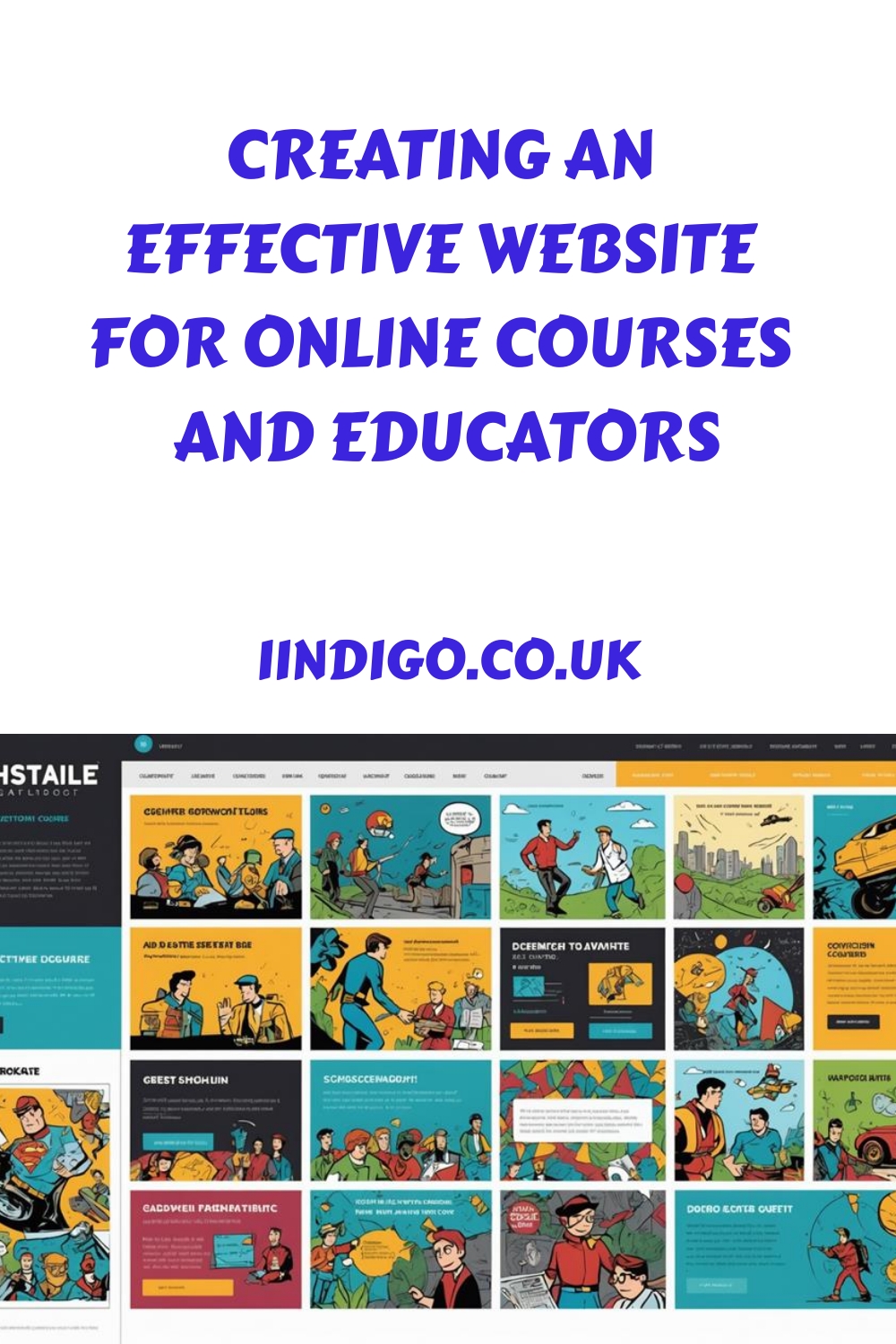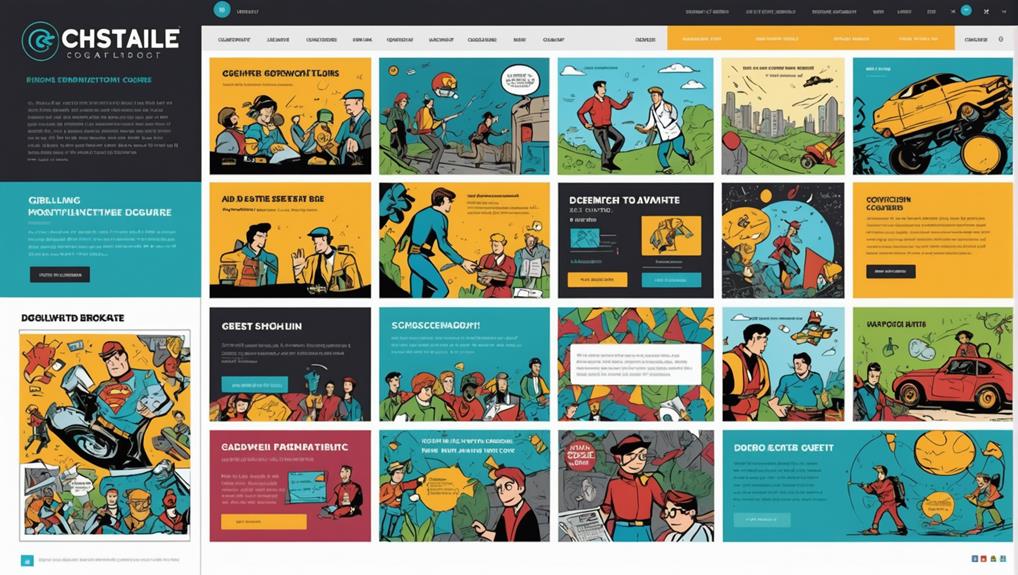
Creating an effective website for online courses means focusing on engaging learners and making navigation easy. Start with interactive elements like quizzes and discussion forums to boost participation. Use a simple layout with clear headings and visuals to keep things organized and fun. Don't forget to make sure your site works well on all devices, so everyone can join in. Also, regularly update content to keep it fresh and relevant. Finally, gather feedback to see what's working and what can improve. There's a lot to explore about building a vibrant online learning community that keeps learners coming back for more.
Key Takeaways
- Implement active learning strategies through multimedia and self-assessment tools to enhance engagement and track learner progress.
- Conduct a needs analysis to align course goals with specific learner requirements and ensure educational relevance.
- Design intuitive navigation and clear information hierarchy to improve user experience and facilitate easy access to course materials.
- Utilize responsive design principles to ensure accessibility and optimal viewing experiences across various devices.
- Incorporate continuous evaluation and feedback mechanisms to monitor learner understanding and adapt teaching strategies accordingly.
Importance of Active Learning
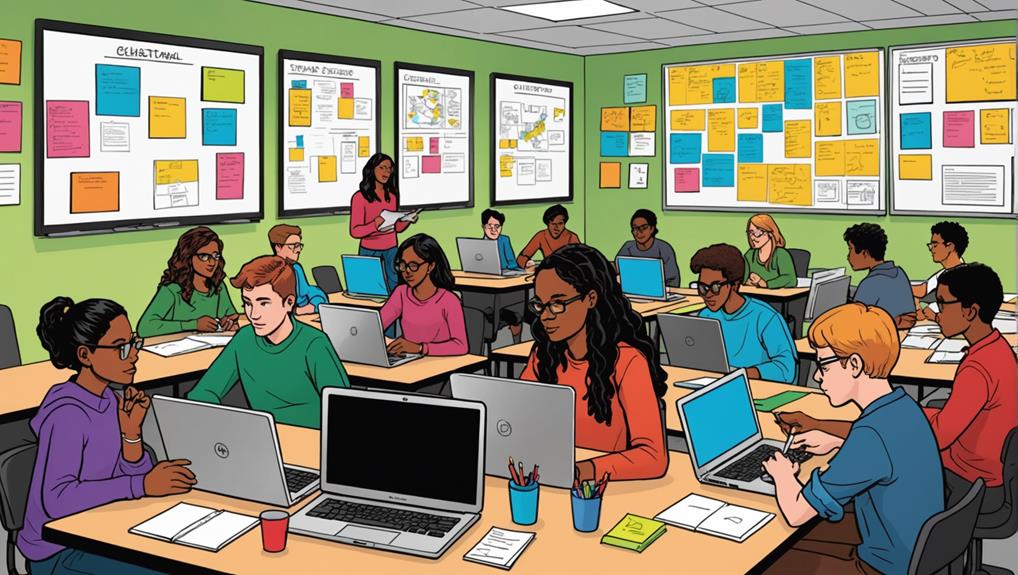
Active learning is essential in online courses, particularly in fields like medical education, where engagement can greatly impact understanding and retention. When you think about it, effective online course development hinges on learner involvement. Unfortunately, many educational websites fall short. In fact, only 17% fully meet the criteria for active learning. To address this gap, engaging custom brand building services can enhance the overall learning experience by creating a compelling online presence that resonates with learners.
Incorporating multimedia and diverse instructional methods can spice up the learning experience. Imagine watching a video that explains complex concepts or participating in interactive quizzes. These tools aren't just fun—they deepen your understanding! Plus, self-assessment tools help you track your progress, which is a fantastic way to stay motivated.
Feedback mechanisms are another key part of active learning. They allow you to reflect on what you've learned and make adjustments. If a website doesn't use these features, it's missing a huge opportunity
Assessing Educational Needs
Understanding your learners' needs is vital for designing effective online courses, especially in medical education. By conducting a needs analysis, you can identify specific healthcare problems and pinpoint the gap between what learners currently know and what they should achieve. This step is essential in making certain that your educational content truly meets their requirements.
Aligning your course goals with these identified needs guarantees your content is both relevant and targeted. It's also important to determine the role of your online learning platform—will it serve as the main instructional method or just a supplement? This decision influences your course design considerably.
Engaging stakeholders, like educators and healthcare professionals, during the needs evaluation can provide valuable insights into learners' preferences and expectations. This collaboration often leads to more effective educational strategies. Remember, evaluating educational needs isn't a one-time task. Continuous assessment is key to adapting to changing learner demographics and emerging trends.
Technical Resources for Development
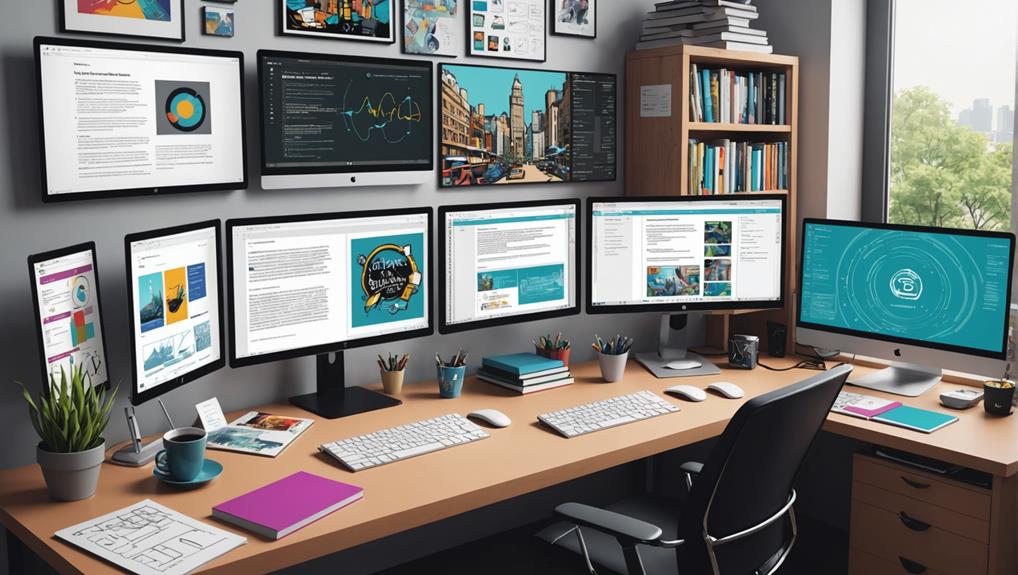
Successful online course development hinges on the right technical resources. To create a truly engaging experience, you need to collaborate with an IT specialist early on. They'll help you understand the subject matter and identify the best instructional mediums that align with your course objectives. Choosing the right online course platform is essential here.
Next, assess and select multimedia tools that enhance engagement. Think about how web design and engaging content work together. Instead of using "shovelware" techniques, which simply transfer old materials online, notably modify your existing curricula for the web. This approach makes your course more interactive and fun!
It's also important to create a thorough project timeline. This timeline should include content development, multimedia creation, and evaluation preparations. Remember, you may need to revise things as you go along.
Designing Effective Course Layouts
Creating an engaging online course goes beyond just choosing the right technical resources; it also involves designing effective course layouts that enhance the learner's experience. Start by establishing a clear hierarchy of information. Place critical details at the top, so learners instantly know what's important. A structured course outline can greatly improve the organization of your course content. Think of main topics as folders and subtopics as actionable activities, guiding students through the material.
Incorporate visual content like images and videos to cater to different learning styles. These elements not only make the course more appealing but also help convey your message more effectively. Use intuitive navigation tools with clearly labeled menu headings, making it easy for students to find what they need. This clarity improves user experience and keeps learners engaged.
Enhancing User Experience
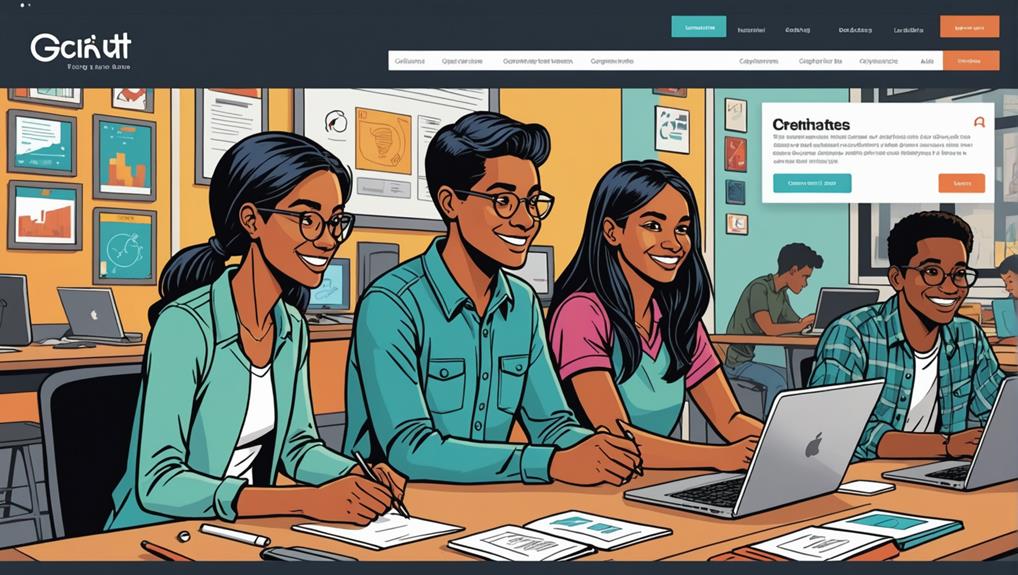
When you visit a website for online courses, you want it to be easy to use and fun to explore. An intuitive navigation system makes finding what you need a breeze, while responsive design guarantees it looks great on any device. Plus, engaging visuals not only grab your attention but also help you remember what you learn, making the whole experience enjoyable and effective.
Intuitive Navigation Systems
Maneuvering an online course should feel effortless, allowing you to focus on learning rather than searching for information. Intuitive navigation systems are key to this experience. When you can easily find course materials, it boosts your confidence and engagement. Effective navigation starts with clear, concise menu labels, so you know exactly where to click.
Consistent placement of navigation bars, headers, and footers across all pages makes the website familiar. This reduces your cognitive load and helps you navigate swiftly. A logical hierarchy of information is essential, too. When important details are prioritized, you can quickly locate the resources you need.
Don't forget about search functionality! It's like having a helpful assistant by your side, ready to direct you to specific courses or materials in no time. User-centered design principles put you first, making sure everything is organized and easy to understand. This allows you to remain engaged throughout your online courses, keeping your learning journey smooth and enjoyable.
Responsive Design Principles
An effective online course experience relies not only on intuitive navigation but also on responsive design principles that enhance user experience across various devices. With more than half of all web traffic coming from mobile devices, it's essential for your online course website to adapt dynamically. That way, learners can easily access content on desktops, tablets, or smartphones.
Using a fluid grid layout helps elements on your webpage resize proportionally, keeping everything visually appealing and cohesive. This approach boosts user engagement, making it easier for students to focus on their learning. Media queries in CSS are fundamental for responsive design, allowing you to apply different styling rules based on a device's screen width and orientation.
Don't forget to test your website on multiple devices to guarantee accessibility and functionality. This step is critical for improving learner satisfaction and encouraging regular use of your educational platform. When your online course website works flawlessly across various devices, you're not just enhancing usability; you're showing appreciation for your students' needs. Ultimately, responsive design creates a welcoming environment that encourages the joy of learning, regardless of where students are.
Engaging Visual Content
Engaging visual content is essential for creating an impactful online course experience. When you use high-quality visuals like images and videos, you cater to visual learners, making the learning process more enjoyable and effective. It's like adding color to a black-and-white picture!
Incorporating interactive elements, such as infographics and animations, can spark interest and help students grasp complex topics. A compelling design captures attention right away and can lead to higher enrollment rates. Think about how a well-designed webpage makes you want to explore more!
Using consistent visual themes across your platform strengthens your brand identity, making it easier for users to navigate. When everything looks and feels connected, it's like following a treasure map.
Responsive design is also key. It guarantees that your engaging visual content displays beautifully on any device, whether it's a phone, tablet, or computer. This enhances accessibility and supports broader audience engagement.
Encouraging Learner Participation
Encouraging learner participation is crucial for the success of online courses, and incorporating interactive features can make a significant difference. By adding elements like discussion forums and gamified activities, you can spark excitement and boost learner engagement. A user-friendly interface helps everyone navigate through materials easily, making it simpler to join in on discussions or complete assignments.
Creating a sense of community is essential too. When you encourage peer interactions and collaborative projects, learners feel supported and more likely to participate actively. Imagine working together on a group project or sharing insights in an online forum; it makes learning feel less lonely and more connected.
Regular feedback mechanisms are also important. They allow both you and your instructors to see how engaged everyone is and help adjust strategies as needed. Plus, setting aside protected time for online learning guarantees that you can focus on your courses without distractions.
All these strategies work together to foster an environment where everyone feels encouraged to jump in and share their thoughts. With the right approach, you can create a vibrant online classroom that thrives on participation and collaboration.
Evaluation and Feedback Mechanisms

Effective evaluation and feedback mechanisms are essential for optimizing online courses. They help you gauge how well your students are doing and adjust your teaching to meet their needs. Using continuous assessment tools, like quizzes and surveys, you can collect valuable insights into learner understanding, pinpointing areas that may need extra attention.
Implementing both formative and summative evaluations guarantees that your students are meeting their goals. Analytics dashboards in Learning Management Systems (LMS) allow you to track completion rates, quiz scores, and participation levels, giving you a clear picture of course effectiveness.
Encouraging discussions through forums or comment sections invites qualitative feedback, fostering an ongoing dialogue between you and your students. This interaction not only improves learner engagement but also helps create a more adaptive and responsive online learning environment.
Addressing Common Barriers
When you're creating an online course, it's important to recognize the common barriers that can pop up, like technical challenges and accessibility issues. You might find that some students struggle to engage with the content, so it's essential to make your lessons interactive and fun. By addressing these concerns, you can create a welcoming environment where everyone feels excited to learn and succeed.
Identifying Technical Challenges
Technical challenges frequently arise in online education, creating significant barriers to effective learning. One major issue is the lack of effective technical resources. Many educational websites don't collaborate with IT specialists early on, which affects the quality and functionality of the site. When it comes to course management systems, these tools are essential for smooth user experiences. However, poor investment in technical infrastructure can limit accessibility and user engagement.
Another challenge is the creation of multimedia elements. Limited experience among team members often results in courses that don't meet active learning criteria, making lessons less engaging. Feedback mechanisms are also important. If you don't continuously assess webpage design, you risk decreasing learner interaction and satisfaction. Finally, security measures are necessary to protect user data. Unfortunately, many educational sites lack sufficient backend infrastructure, which can leave them vulnerable to breaches.
While these challenges can seem intimidating, recognizing them is the first step toward improvement. By addressing technical issues, you can enhance the online learning experience for everyone involved. Embrace these challenges with determination, and you'll create a more effective educational environment!
Ensuring Accessibility Compliance
To create an inclusive online learning environment, you need to tackle accessibility compliance head-on. This means confirming your website meets standards like the Web Content Accessibility Guidelines (WCAG). By doing this, you help everyone, including those with disabilities, engage with your course content.
Here are some common barriers you can address:
- Use clear alt text for all images.
- Confirm good color contrast for better visibility.
- Include keyboard navigation options for those who can't use a mouse.
- Provide text alternatives for videos and audio clips.
- Conduct regular user testing with individuals who have disabilities.
Overcoming Engagement Barriers
Engagement is vital for effective online learning, yet many courses struggle to capture and maintain students' attention. One major barrier is passive learning content. Did you know that only 17% of educational websites meet full active learning criteria? To overcome this, your course should include interactive features that make learning fun and engaging.
User-friendliness is also key. When your website is easy to navigate, learners feel more comfortable exploring content. This is especially important for diverse learner groups. Involvement from instructors can create a "community of learning." When you actively monitor discussions, it encourages participation and connection among learners.
Gamification strategies, like progress tracking and point systems, can take engagement to the next level. These incentives motivate students and make the learning experience more enjoyable. Finally, continuous feedback is essential. By listening to learners, you can pinpoint barriers to engagement and adjust your content accordingly.
With these strategies, you can create a vibrant online environment where learners are excited to engage with the material. Overcoming these barriers may seem challenging, but with effort, you can foster an engaging learning experience that truly inspires your students.
Types of Educational Websites

When exploring the landscape of online education, you'll find various types of educational websites designed to meet different needs. Each type plays a unique role in helping you learn and grow. Here are some of those options:
- Online learning platforms: These sites offer diverse resources, including lectures and quizzes, with interactive features that engage users through forums and chat rooms.
- Educational institutions: Their websites serve as central hubs for important information, like program details and admissions processes, tailored to students and parents.
- Course management systems: These tools simplify course administration by tracking grades and assessments, making interactions between students and instructors efficient.
- Educational resource portals: They compile useful materials, such as lesson plans and tutorials, to aid both educators and students.
- Educational blogs: These platforms share articles and insights on various topics, fostering community engagement and a space for shared best practices.
Best Practices for Website Maintenance
In today's fast-paced digital landscape, maintaining your educational website is vital for keeping users engaged and informed. Regularly updating website content is a must, as it helps remove outdated information and incorporates new resources. This not only keeps learners excited but also boosts your search engine rankings. You should conduct periodic reviews of your website's functionality to guarantee it meets the needs of both educators and students.
Implementing secure web practices is significant too. By regularly updating software and using SSL certificates, you protect user data and build trust with your audience. Plus, utilizing analytics tools can help you monitor user behavior and website performance. This valuable data allows you to make informed improvements that enhance the overall user experience.
Lastly, don't forget about responsive design! Making sure your website looks great on various devices improves accessibility and keeps users happy. By following these best practices for website maintenance, you'll create a dynamic and inviting online space for learners and educators alike. Embracing these steps will help you navigate the challenges of the digital world, allowing for a brighter, more engaging educational experience!
Frequently Asked Questions
How to Create a Website for Online Teaching?
To create a website for online teaching, focus on a robust course platform with seamless content management, video integration, and a strong branding strategy. Implement marketing tactics that enhance user experience and foster community engagement.
How Do I Create an Online Class Website?
To create an online class website, focus on engaging course content and intuitive user experience. Consider platform selection, payment integration, and mobile accessibility while implementing effective marketing strategies to boost student engagement and reach your audience.
How to Build an Education Website?
To build an education website, focus on platform selection and content organization. Enhance user experience with engagement tools, payment integration, and effective marketing strategies. Don't forget analytics tracking to measure success and improve continually.
How Can Teachers Create Effective Online Classes?
So, you think just throwing up a few slides is enough? Nope! Use engagement strategies, interactive tools, and varied content delivery. Gather student feedback, apply smart assessment methods, and prioritize course design for real community building.
Final Thoughts
Creating an effective website for online courses is like building a bridge to knowledge. It connects educators and students, making learning accessible and engaging. By focusing on active learning, evaluating needs, and enhancing user experience, you can craft a space that inspires growth. Remember, challenges may arise, but with the right tools and practices, you'll pave the way for success. So, embrace the journey and watch your educational dreams take flight!
- Writing Content That Converts Visitors Into Customers - 04/11/2025
- How to Plan a Content Calendar That Works - 29/10/2025
- SEO Content vs. Social Media Content: What’s the Difference? - 23/10/2025
